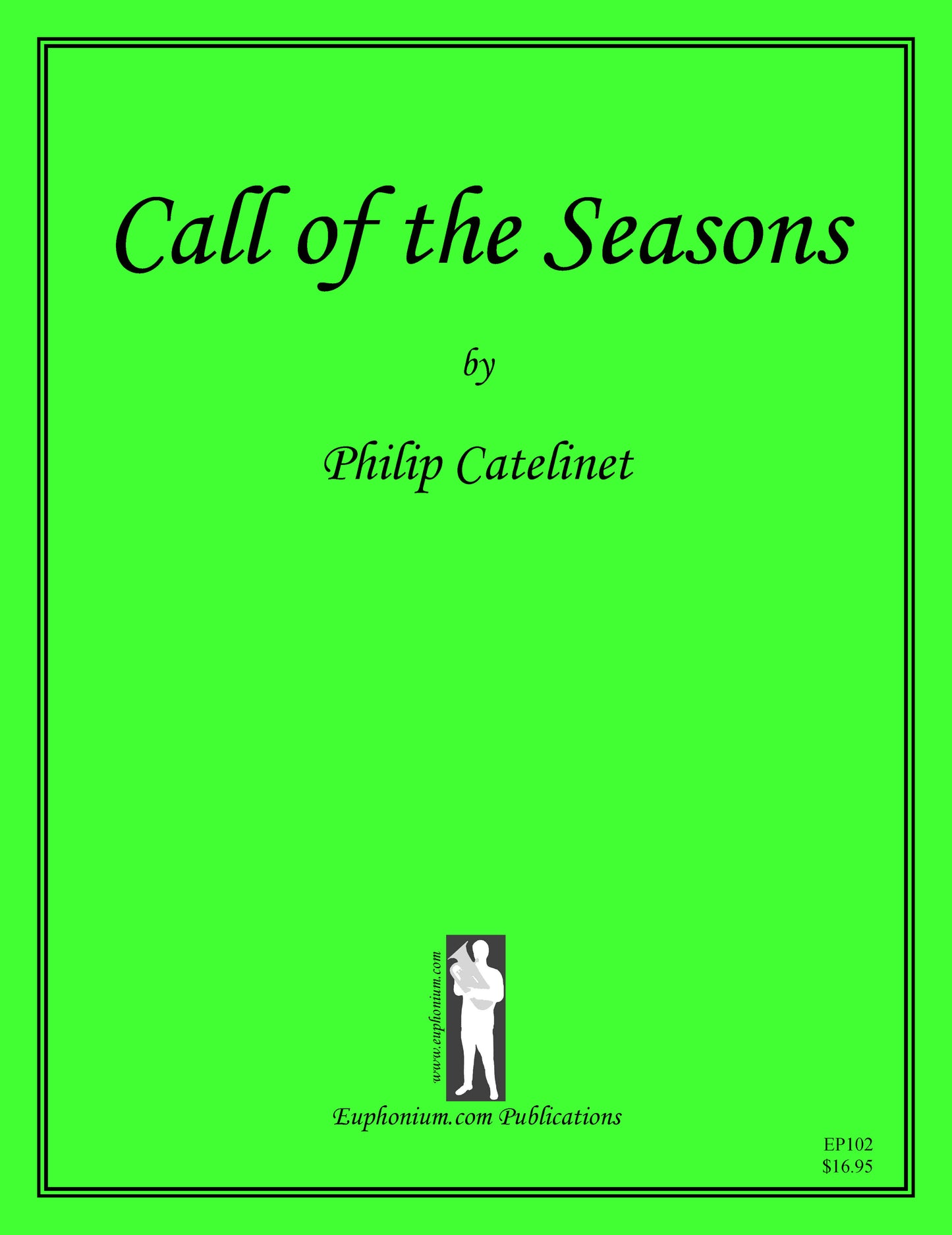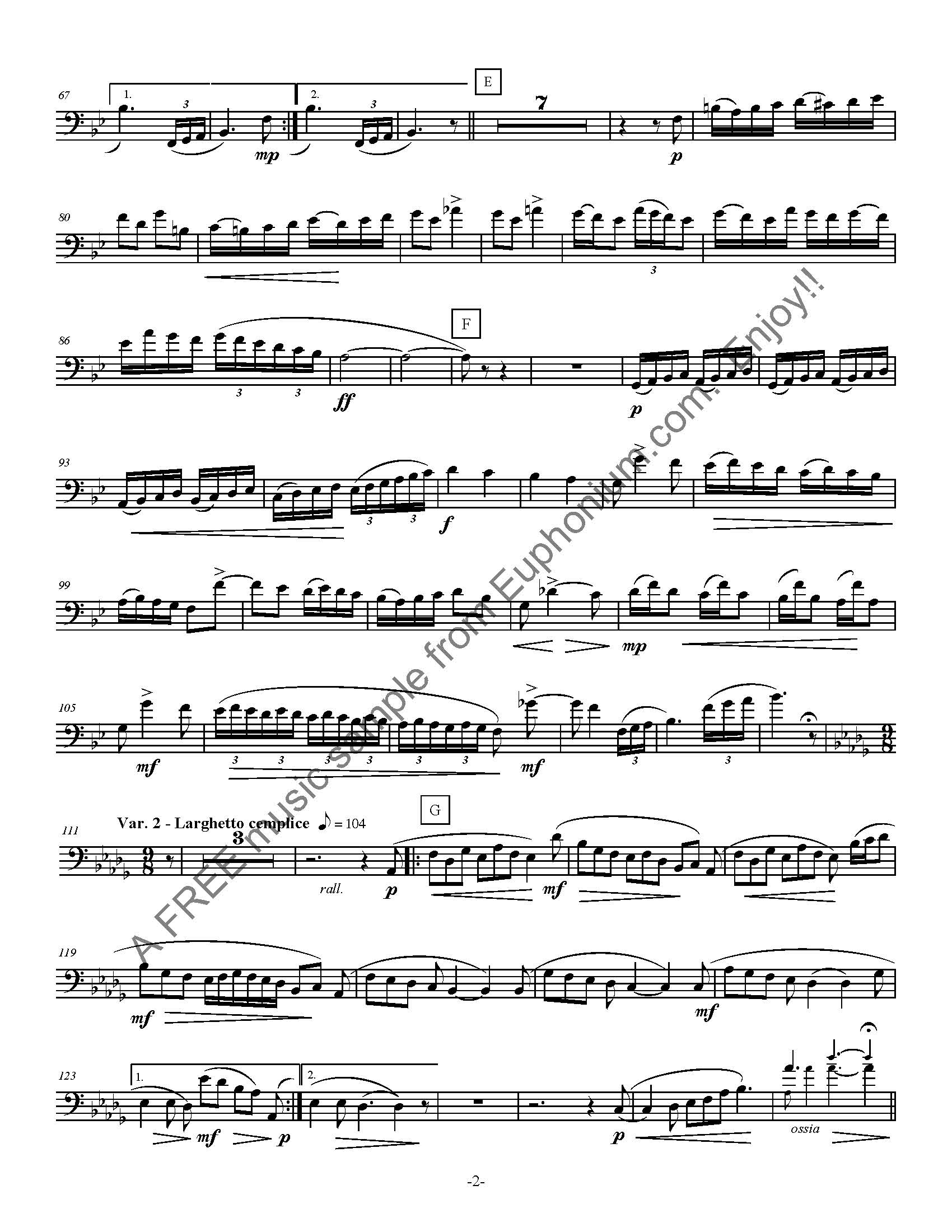Euphonium.com Publications
Catelinet, Philip - Call of the Seasons
Catelinet, Philip - Call of the Seasons
Regular price
$17.95 USD
Regular price
Sale price
$17.95 USD
Unit price
per
Shipping calculated at checkout.
Couldn't load pickup availability
Difficulty: IV
Length: 8:20
Recorded on Beyond the Horizon Volume 2
Finally available in a wonderfully clear typeset piano score and solo part in both Bass clef and Treble Clef. One of the GREAT euphonium solos from the traditional brass band genre, Call of the Seasons combines dramatic lines, introspective melody, jovial character, and exciting technique to showcase the soloist all wrapped into a fine theme of the changes of the seasons. HIGHLY RECOMMENDED.
Program Notes:
Philip Bramwell Catelinet was born in Guernsey in the United Kingdom in 1910. At a young age, he was immersed in music and grew to be an accomplished pianist, composer, arranger, euphoniumist, and tubist. Catelinet was a dedicated Salvation Army member and occupied a number of positions for the Army during his life including becoming an officer and working in the Music Editorial Department, bandmaster at Battersea, euphoniumist with the International Staff Band, and later as a music consultant to the Salvation Army in Pittsburgh, PA. As a tubist, his name is synonymous with the world premiere of the Vaughn Williams Tuba Concerto with the London Symphony Orchestra in 1954. As a composer, Catelinet amassed a large body of repertoire including 15 orchestral works, 30+ works for wind band, 50+ works for brass band, a vast number of arrangements and compositions for brass soloists and brass chamber groups, and an astounding 200+ works for the Salvation Army. He and his family immigrated to the US in 1956 to the Pittsburgh area and one of his last teaching posts was at Carnegie Mellon University. Philip Catelinet died in 1995 and on a personal level was known as a kind and gentle man.1
Written as a theme and variations that captures the moods of the four seasons of the year, Call of the Seasons captures the tradition of the euphonium soloist and brass band exquisitely. The style of the solo part and accompaniment typify the color and character of the brass band (even when performed with the piano reduction). The excellent lyrical and technical writing results in listening enjoyment for the audience and performers. The melodic opening captures a somber mood before turning more optimistic with a quicker tempo and various counter-melodies. Variation 1 captures a more upbeat feeling with sixteenth note, diatonic runs before Variation 2 in 9/8 highlights a wonderful ascending melody that allows the euphonium to demonstrate wonderful phrasing. The finale, written as a Vivace 6/8, contains the most technical writing with a jovial melody. One fun exercise for players and audience involves determining which sections of the piece represent the various seasons.
Parts: BC and TC






